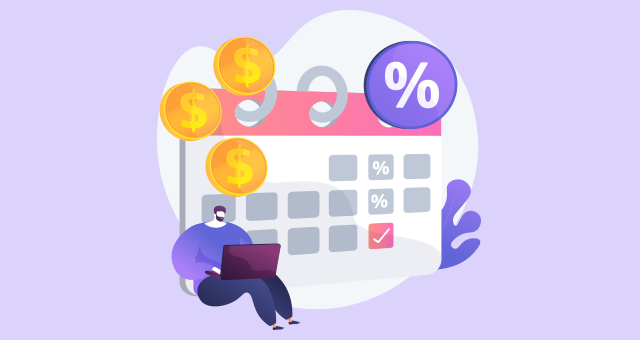
Federal Reserve’s Projected Rate Hikes: How to Prepare
The Federal Funds Rate is the Federal Reserve’s most important weapon for dealing with inflation. But, this government-set interest rate also has a considerable influence over the short-term interest rates. In mid-March, the Federal Reserve announced a rise of 0.25% in the Federal Funds rate and it signaled that might raise it six times more over the rest of 2022 in quarter-point increments.
The increased rates will impact consumer interest rates and borrowing costs will continue to rise. So, if you have debt or plan to borrow soon, here are some tips to navigate the Fed’s policy change and minimize the effect on your finances.
1. Double Down On Your Variable Interest Debt
As interest rates rise, so do credit cards or loans at adjustable rates associated with Federal interest rates. This means paying off any variable debt, especially credit card debt. This should be a high priority as it will cost you more to repay the same amount of debt over time.
Apply any additional funds, such as your tax refund, to your debt. You can also take out a personal loan or money saved in a low-interest savings account to pay off higher interest debts, depending on what makes more sense to you.
You could use the “debt-avalanche strategy” to pay off debts with a higher interest rate first before they rise even more.
In addition, you might also consider debt consolidation options, such as applying for a 0% introductory APR credit card on balance transfers and transferring a chunk of your debt for interest-free repayment for up to 21 months. Although most credit cards charge a 3% balance transfer fee, you may still save money.
2. Lock-In Your Mortgage Interest Rate
As mentioned earlier, the Federal Funds rate has a significant impact on short-term interest rates. However, fixed-rate mortgage rates are linked to the important long-term rate which is the yield on the 10-year Treasury note. Currently, the 10-year Treasury is also on the rise so mortgage rates are also rising, even though they are not directly tied to the Fed’s interest rate decisions.
The average interest rate on a 30-year mortgage is now reaching 4.81% after being below 3% for much of 2020-2021. Therefore, if you are considering putting an offer on a home you may consider locking in your interest rates to protect against it drifting to an even higher rate in the coming weeks.
3. Switch From An ARM To A Fixed-Rate Mortgage
If you have an adjustable-rate mortgage and plan to stay in your home for the next five years, then now is an excellent time to consider switching to a fixed-rate loan. By locking in a fixed rate now, you will avoid your interest rate growing in lockstep with the Federal Funds Rate, and have some extra peace of mind. However, keep in mind that if interest rates drop significantly in the future, you will only be able to benefit if you qualify for refinancing. Make sure you do your homework since fixed-rate mortgages are not for everyone.
Additionally, if you are close to paying off your mortgage in full, consider putting some of your savings towards paying it off faster to qualify for a reduced interest rate.
4. Consider A Home Equity Loan Over A HELOC
As interest rates are likely to climb, consider taking out a home equity loan to pay off your HELOC (home equity line of credit). This is because HELOCs are linked to the prime rate and if this rises, so will your line of credit’s interest rate. Depending on the amount you borrowed, the payment may soon become unaffordable, putting your home in jeopardy. You can secure lower interest rates by switching from a HELOC to a home equity loan. However, look before you leap when it comes to home equity loans.
If you currently have a home equity line of credit, you could also pay it off using your savings, especially if the money is not yielding much interest. The rise in interest rates could cost you a lot more in interest payments each month.
5. Work On Your Credit Score
Personal credit ratings are the one thing that limits consumers’ capacity to borrow cheaper than the Fed. Often, financial institutions save the best rate for the “safest” borrowers: those with good-to-excellent credit scores and consistent credit history.
Improving your credit score entails more than just lowering your credit card debt interest rate. It may also help you in saving money on all basics of your borrowing, such as vehicle loans and mortgages.
Focus on making all of your debt payments on time and keeping your credit usage ratio as low as possible to get the best credit score possible. These are the two criteria that have the most impact on how your credit score is calculated.
However, a simple fix such as reviewing your credit report for mistakes can have an immediate impact on your credit score.


